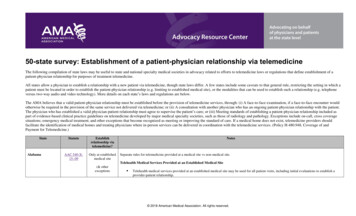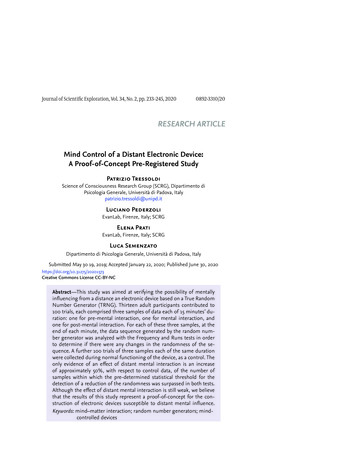
Transcription
Journal of Scientific Exploration, Vol. 34, No. 2, pp. 233–245, 20200892-3310/20RESEARCH ARTICLEMind Control of a Distant Electronic Device:A Proof-of-Concept Pre-Registered StudyPatrizio TressoldiScience of Consciousness Research Group (SCRG), Dipartimento diPsicologia Generale, Università di Padova, Italypatrizio.tressoldi@unipd.itLuciano PederzoliEvanLab, Firenze, Italy; SCRGElena PratiEvanLab, Firenze, Italy; SCRGLuca SemenzatoDipartimento di Psicologia Generale, Università di Padova, ItalySubmitted May 30 19, 2019; Accepted January 22, 2020; Published June 30, 2020https://doi.org/10.31275/20201573Creative Commons License CC-BY-NCAbstract—This study was aimed at verifying the possibility of mentallyinfluencing from a distance an electronic device based on a True RandomNumber Generator (TRNG). Thirteen adult participants contributed to100 trials, each comprised three samples of data each of 15 minutes’ duration: one for pre-mental interaction, one for mental interaction, andone for post-mental interaction. For each of these three samples, at theend of each minute, the data sequence generated by the random number generator was analyzed with the Frequency and Runs tests in orderto determine if there were any changes in the randomness of the sequence. A further 100 trials of three samples each of the same durationwere collected during normal functioning of the device, as a control. Theonly evidence of an effect of distant mental interaction is an increaseof approximately 50%, with respect to control data, of the number ofsamples within which the pre-determined statistical threshold for thedetection of a reduction of the randomness was surpassed in both tests.Although the effect of distant mental interaction is still weak, we believethat the results of this study represent a proof-of-concept for the construction of electronic devices susceptible to distant mental influence.Keywords: mind–matter interaction; random number generators; mindcontrolled devices
234P. Tr e s s o l d i , L . P e d e r z o l i , E . P ra t i , L . S e m e n z a t oINTRODUCTIONIn this study, we present the findings of a new distant mind–matter(or PK) interaction study aimed not only as a further contribution tothis classical line of research, but mainly as a proof-of-concept for apractical application of this phenomenon.Distant mental activation of electronic equipment, that beingwithout direct contact or electromagnetic means, seems impossible,but it becomes possible if we consider the ability to mentally alter froma distance the activity of random number generators, for example, the0 and 1 sequences produced by a True Random Number Generator(TRNG).Testing the possibility of mentally altering the function of randomevent generators began in the 1970s with the work of Helmut Schmidt,and later became one of the main lines of research within the PrincetonEngineering Anomalies Research (PEAR) laboratory, directed by RobertJahn and Brenda Dunne (Duggan, 2017; Jahn et al., 2007) employingfour different categories of random devices and several distinctiveprotocols. They show comparable magnitudes of anomalous meanshifts from chance expectation, with similar distribution structures.Although the absolute effect sizes are quite small, of the order of 10 4bits deviation per bit processed, over the huge databases accumulated,the composite effect exceeds 7 (p 3.5 10 13).Even though a meta-analysis of 380 studies up to 2004, related tothis phenomenon, showed a small effect and a large heterogeneity inthe studies (Bösch et al., 2006; Radin et al., 2006) and was the objectof criticism (Varvoglis & Bancel, 2016; Kugel, 2011), by modifying theinteraction procedure and the type of data analysis we believe that itis possible to exploit this small effect for practical applications and,specifically, to activate from a distance an electronic device interfacedwith a TRNG.This device, which we have called MindSwitch2, is described indetail in The Electronic Device section of this paper. In contrast toalmost all previous experiments, which required participants to mentallygenerate an increase in 0 or 1 states and then to compare them to abaseline, we simplified the procedure by asking participants to alter thenormal random flow of 0 and 1 toward an excess of either 0 or 1. We
M i n d C o n t r o l o f a D i s t a n t E l e c t r o n i c D e v i ce235thought this procedure more efficient with respect to the classical onesince the possible effect of the mental interaction was not bound to aspecific influence to the random flow of only the zeros or ones.In fact, the efficacy of this procedure was confirmed in a studyby Tressoldi et al. (2016), and a possible explanation for it was positedin the study by Pederzoli et al. (2017). In an initial pilot experiment,and later in a pre-registered experiment, the participants were askedto alter from a distance the function of a TRNG to reach the thresholdlevel, fixed at 1.65 z-score with respect to the theoretical average value.The number of mentally altered samples in the confirmatory study was82.3%, versus 13.7% with no mental interaction.To verify a reduction in randomness, in this study we applied theFrequency Test and the Runs Test present in the suite of tests providedby the National Institute of Standards and Technology (Bassham et al.,2010), as well as a calculation of the mean of the absolute differencebetween the ones and zer0s in each sample (see Methods section).The Frequency Test calculates the proportion of ones and zerosin a sequence and determines the probability of the calculated value’sdeviation from what would be expected if the sequence itself weretotally random. The purpose of the Runs Test is to determine whetherthe number of runs of ones and zeros of various lengths is as expectedfor a random sequence. In particular, this test determines whether theoscillation between such zeros and ones is too fast or too slow.The mean of the absolute value of the difference between the zerosand ones of each sample is a rough measure of entropy, indicatingthe extent of deviation from control conditions. The smaller the meanvalue, the smaller the absolute value of the difference between thezeros and ones.The decision to implement these measurements derives from thetheory that distant mental interaction may favor order where there isdisorder, and therefore be able to reduce the randomness of data byincreasing the number of zeros and ones, increasing the sequences ofidentical values (Burns, 2012), or both.As a control, for each trial three sets of data were gathered, all forthe same duration of time, one before, one during, and one after themental interaction. In this way it is possible to minimize environmentalinterferences such as temperature or electromagnetic emissions, even
236P. Tr e s s o l d i , L . P e d e r z o l i , E . P ra t i , L . S e m e n z a t othough in normal conditions these factors appear to have no effect onthe TRNG’s activity.As a further control of experimental conditions, another 100 trialswere recorded mainly on the same days as the experimental data, at leastone hour before and after with respect to the latter, each comprisingthree 15-minute samples of data.Lacking sufficient information regarding both the ideal interactionduration and the most effective mental interaction strategy to use, weleft the participants to decide on the most suitable mental strategy forthemselves and to choose the duration of influence as either 5, 10, or15 minutes.The main confirmatory hypotheses of this study are that:a) the samples obtained during distant mental interactioncontain a higher number of data that exceed the probability cutoff ofthe Frequency or Runs tests of non-randomness and/orb) that the means of the absolute differences between thezeros and ones is greater during the mental interaction than in the preinteraction and the control phases.Among the data collected immediately after the mental interactionphase, there is some evidence in the literature suggesting that theeffect of mental interaction itself may continue for a certain period oftime even after the termination of the voluntary interaction (Stanford& Fox, 1975; Tressoldi et al., 2016). The confirmatory hypothesis is thatduring the post-influence phase the same effects observed during thevoluntary mental influence phase will be obtained.There are no confirmatory hypotheses regarding the differencesbetween these two conditions.METHODSStudy Pre-RegistrationBefore any data were collected, the methods on which this study isbased as well as statistical analyses of confirmatory hypotheses werepre-registered at https://osf.io/3g95p and at uments/KPU Registry 1049.pdf
M i n d C o n t r o l o f a D i s t a n t E l e c t r o n i c D e v i ce237ParticipantsExperienced and non-experienced participants were recruited amongsubjects known to the authors. Only those whose previous experiencewith this type of experiment was known to the authors were consideredas experienced.The participants were five men (average age 48 years; SD 15)and eight women (average age 46 years; SD 13), of whom three wereexperienced and ten were non-experienced.As specified in the pre-registration, 100 trials were carried out inblocks of 5. Seven participants chose to contribute with 10 trials each,and the remaining 6 each made 5 trials.The Electronic DeviceThe device named MindSwitch2, including its software, is describedat https://github.com/tressoldi/MindSwitch so that it can be easilyreproduced. In a nutshell, it comprises a single-board Raspberry PImini-computer, a power bank, a TrueRNG, and a USB stick.During the study, parameters for analysis of the TrueRNG remainedfixed: 100 bits/sec for one minute, for a total of 6,000 bits, collected 15consecutive times for each of the three phases: pre-mental interaction(PreMI), mental interaction (MI), and post-mental interaction (PostMI).After each minute, the software analyzed the data using theFrequency Monobit Test and the Runs Test from the National Instituteof Standards and Technology (Bassham et al., 2010), and, if the statisticalanalysis gave a p-value 0.05, a visual and auditory signal was activated(an LED was lit for 5 seconds and a 1-sec acoustic signal was emitted).The results of each of the 15 measurements were recorded on theUSB to be exported and analyzed offline. A copy of the raw data1 isavailable at hese parameters were decided after a series of pilot tasks.Before data collection, the preregistered parameter of 200 bits/sec waschanged to 100 bits/sec in order to reduce the Raspberry PI processingtime.
238P. Tr e s s o l d i , L . P e d e r z o l i , E . P ra t i , L . S e m e n z a t oProcedureThe dates and times of each trial were agreed upon between theparticipant on duty and the first author. On the agreed day and time,the first author contacted the participant via Skype. After at least onepractice attempt to acquire confidence with the procedure, the formalseries of trials began at one or at most two per day (e.g., morning andevening), so as to ensure the participant’s best mind–body efficiency.The shortest distance from the MindSwitch was approximately 15 km,the longest distance approximately 4,000 km.Each trial consisted of three successive 15-minute phases: before(PreMI), during (MI), and after mental interaction (PostMI).The first author activated MindSwitch2, located at least 5 metersfrom himself in a room with a constant temperature of about 20 C andfar from any electromagnetic energy sources, including the PC used forthe Skype connection. During the mental interaction, the first author,after having given the participant the go-ahead to begin the distantinteraction, moved away from the monitor for the entire duration ofthe session and returned to it after the elapsed time to terminate thesession.All participants were given the following instructions:Your task is to influence the output of the flux of 0’s and 1’sgenerated by the TrueRNG connected with our apparatus [they areshown MindSwitch2], reducing or increasing either the 0’s or the1’s. If you are able to alter this flux of data up to a given threshold,you will activate a red LED and hear an acoustic signal. Do youprefer to directly look at the MindSwitch2 or not?In the case of an affirmative response, they were able to see theMindSwitch2 via the Skype camera. When the response was negative,for example if the participant believed it to be a distraction during theinteraction, the camera was switched off.Furthermore, they were asked if they wanted to receive the resultsafter each trial or at the end of their participation. The results weresummarized to show them the number of MindSwitch2 activationsbefore, during, and after their mental interaction, and a final evaluation
M i n d C o n t r o l o f a D i s t a n t E l e c t r o n i c D e v i ce239as follows: positive (more activations during the mental interaction withrespect to the pre- and post- conditions), negative (fewer activationsduring the mental interaction with respect to the pre- and postconditions), or neutral (identical number of activations during themental interaction and the pre- and post- conditions).In order to not contribute direct influence on the MindSwitchduring this interaction, the experimenter moved out of the place wherethe MindSwitch was located for the entire duration of the session.ScoringAs described in the pre-registration, the dependent variables werethe number of samples reaching a p-value of 0.05 for the FrequencyMonobit or Runs Tests, and therefore a minimum value of 0 andmaximum of 15 for each trial, as well as the average of the deviations ofthe absolute differences between the zeros and ones.RESULTSThe number of trials with the higher number of MindSwitch2 activationsin the comparison between MI vs PreMI, PostMI vs PreMI, and MI vsPostMI conditions, detected by the Frequency Test, the Runs Test, andboth tests together, are presented in Table 1. These are raw values, butgiven that the total number of trials is 100, they may also be consideredas percentages.TABLE 1Number of Trials with a Higher Number of MIndSwitch2 Activations inComparisons of MI vs PreMI, PostMI vs PreMI, and PostMI vs MI Conditions,Detected by the Frequency Test, the Runs Test, and Both Tests TogetherMI vs Pre-MIPostMI vs Pre-MIMI vs Post-MIFrequency Test29 – 34 [33 – 28]34 – 31 [33 – 26]30 – 41 [29 – 31]Runs Test24 – 35 [29 – 36]30 – 36 [29 – 37]30 – 30 [34 – 28]9 – 3 [4 – 4]5 – 3 [2 – 4]9 – 5 [4 – 2]Frequency & Runs TestsMI mental interaction. Pre-MI pre-mental interaction. Post-MI post-mental interaction. [ ] the same data related to the three samples of the control trials, 2nd vs 1st,3rd vs 1st, 2nd vs 3rd. Differences from 100 are ties. Bold numbers the main differences.
240P. Tr e s s o l d i , L . P e d e r z o l i , E . P ra t i , L . S e m e n z a t oMeans of the Absolute Differences between Zeros and OnesThe number of samples with a higher mean of the absolute differencesbetween 0s and 1s is presented in Table 2.TABLE 2Number of Trials with Higher Meanof Absolute Differences between Zeros and OnesMI vs Pre-MIPost-MI vs Pre-MIMI vs Post-MI48 – 51 [50 – 50]45 – 55 [58 – 42]49 – 51 [40 – 60]MI mental interaction. Pre-MI pre-mental interaction. Post-MI post-mentalinteraction. [ ] the same data related to the three samples of the control trials.CommentWith respect to the confirmatory hypotheses, the only dependentvariable that seems influenced by the MI is the detection of nonrandomness by both the Frequency Test and the Runs Test within thesame sample of data (see Figure 1).In short, in favor of the MI effect we see a difference of 6 trials withrespect to the PreMI phase; a difference of 4 with respect to the Post-MIphase, of 5 with respect to the first and second control series, and of 7with respect to the third control series.Even if, as described in the pre-registration, these differences canbe analyzed from a statistical point of view, we believe that applyinginferential statistics to these data is inappropriate in that it is notpossible to generalize our results to include other participants andexperimenters.In every case the results of a statistical comparison between the9% of observed events in MI and the 3% of observed events in PreMI,gives a Z value 1.78, p 0.036 (one-tailed); the comparison of the 9%observed events in MI and the 4% observed in the control conditions,gives a Z value 1.43, p 0.07 (one-tailed).
M i n d C o n t r o l o f a D i s t a n t E l e c t r o n i c D e v i ce241Figure 1. Number of samples where the reduction of randomness was detectedby both the Frequency and the Runs tests.Exploratory AnalysesWe wanted to analyze the trend of the absolute differences betweenzeros and ones recorded in all sample data in the control PreMI, MI,and PostMI phases. Remember that the greater this value, the lower theentropy (randomness) of the sequences of zeros and ones generated bythe TRNG.We therefore counted the number of samples in which thesedifferences exceeded the threshold value of 150, which corresponds toa p-value 0.05 in the Frequency Test, after which we also did it forthose above threshold values of 160, 170, 180, 190, and 200. The resultsare illustrated in Figure 2.As shown clearly in Figure 2, the number of samples indicatingless entropy, and therefore a larger difference between zeros and ones,is greater in the PostMI condition, followed by PreMI, but the variationdisappears when the differences are 190. Furthermore, the number ofsamples observed in the MI phase is comparable with what is seen inthe three control phases.While for the PostMI phase this result was expected by positing
242P. Tr e s s o l d i , L . P e d e r z o l i , E . P ra t i , L . S e m e n z a t oFigure 2. Trend of the number of times that the differences between zeros andones differed by 150 to 200 in the samples of data of the PreMI, MI,PostMI, and three control phases.a type of “tail or wave effect” of the MI phase, what was observed inthe MI and PreMI phases was unexpected and will be dealt with in theDiscussion section.DISCUSSIONFor the time being, mentally influencing MindSwitch2 from a distancedoes not seem as easy as manually flipping a switch on any type ofelectronic equipment.In this experiment the only parameter that appears to be influencedby distant mental interaction is the reduction of randomness detectedby the Frequency and Runs tests within the same sample of data. Eventhough the absolute value is not high—9 samples out of 100—it ishowever almost twice as much as the PreMI, PostMI, and controlphases, as shown in Figure 1.Do the results of this experiment represent a proof-of-conceptof the possibility of creating electronic devices that can be mentallycontrolled from a distance? We believe so, because our results suggestthat it is possible to start to improve the mental-signal/noise ratio ofthe random number generator ratio.
M i n d C o n t r o l o f a D i s t a n t E l e c t r o n i c D e v i ce243To reduce the random number generator’s noise, apart fromseeking those with more stable entropy, new more efficient algorithmsto detect reduced randomness could be tested. Furthermore, we stilldon’t know the ideal length of string bits that can maximize the mentalsignal’s effect.Moreover, how can the mental signal be strengthened? Theanswer to this question is unfortunately still vague. For example, isthere a “dose-effect”—in other words, will the signal improve as theinteraction’s duration is extended? Of the eight participants who alteredthe data flow in the MI condition (1) by simultaneously exceeding thestatistical thresholds of the two statistical tests, 4 of them had aninteraction of 10 or 15 minutes and the other 4 for only 5 minutes.Therefore, this experiment does not seem to highlight a “dose-effect”linked to the duration of the mental interaction.We wonder if there is evidence of some sort that will allow us todetermine whether direct mental influence strategies are more efficientthan non-direct mental strategies, such as:Direct Mental Strategies:I mentally created a flash of light forming a connection cable toMindSwitch. (Participant #11)I ‘asked’ and ‘hoped’ for it to turn on and mentally repeated therequest. (Participant #5)Indirect Mental Strategies:I attempted, with the aid of spiritual music, to create a field ofpositive emotion surrounding MindSwitch. (Participant #8)I cleared my mind of random thoughts. (Participant #1)For now, we have no answer to this question either.Furthermore, if we look at the information in Figure 2, whichshows that lower entropy events are more common during the PreMIphase than in the MI phase, still more doubts arise as to the idealstrategy for distant mental influence.We remind readers that the PreMI phase occurred in the 15
244P. Tr e s s o l d i , L . P e d e r z o l i , E . P ra t i , L . S e m e n z a t ominutes preceding the MI phase, therefore during a time when theparticipants were certainly not attempting any voluntary influence ofMindSwitch2, but they were indeed preparing to do so by planning themental strategy to be used after forming a clear image of the end goal.To summarize, even if we are convinced we have offered a proofof-concept of the feasibility of a practical application of the mind–matter interaction at a distance with electronic devices, this experimentunderscores the many unknowns remaining, before we can improvethe “mental signal/noise ratio.”Obviously, these comments are applicable only to what wasobserved in this experiment. More precise answers will come forthonly from further data collection using other participants, otherexperimenters, other types of random number generators, andanalytical algorithms to assess the reduction in entropy of the bitssequences.NOTE1See the per-participant results in the file "MindSwitch ExperimentSummary.xlsx" at KNOWLEDGMENTSThis study was made possible thanks to grant 29/18 from the BialFoundation and to the voluntary contribution of our 13 participants.We also thank Jim Kennedy for his pre-registration supervision, and theEnglish revision by Cinzia Evangelista in Melbourne, Australia.REFERENCESBassham, L. E., III, Rukhin, A. L., Soto, J., Nechvatal, J. R., Smid, M. E., Barker, E.B., Leigh, S., Levenson, M., Vangel, M., Banks, D. Heckert, A., Dray, J., &Vo, S. (2010). A statistical test suite for random and pseudorandom numbergenerators for cryptographic applications. National Institute of Standards andTechnology. U.S. Department of Commerce. https://doi.org/10.6028/NIST.SP.800-22r1aBösch, H., Steinkamp, F., & Boller, E. (2006). Examining psychokinesis: Theinteraction of human intention with random number generators—A metaanalysis. Psychological Bulletin, 132(4), 497
M i n d C o n t r o l o f a D i s t a n t E l e c t r o n i c D e v i ce245Burns, J. E. (2012). The action of consciousness and the Uncertainty Principle.Journal of Nonlocality, 1(1), 1–9.Duggan, M. (2017). Psychokinesis research. In Psi Encyclopedia. Society for PsychicalResearch. http://tinyurl.com/y6l9zznzJahn, R. G., Dunne, B. J., Nelson, R. G., Dobyns, Y. H., & Bradish, G. J. (2007).Correlations of random binary sequences with pre-stated operatorintention: A review of a 12-year program. EXPLORE, 3(3), 244–253. , W. (2011). A faulty PK meta-analysis. Journal of Scientific Exploration, 25(1),47–62. https://www.scientificexploration.org/docs/25/jse 25 1 Kugel.pdfPederzoli, L., Giroldini, W., Prati, E., & Tressoldi, P. E. (2017). The physics of mind–matter interaction at a distance. NeuroQuantology, 15(3), 114–119. https://doi.org/10.14704/nq.2017.15.3.1063Radin, D., Nelson, R., Dobyns, Y., & Houtkooper, J. (2006). Reexaminingpsychokinesis: Comment on Bösch, Steinkamp, and Boller (2006).Psychological Bulletin, 132(4), 529–532. , R. C., & Fox, C. (1975). An effect of release of effort in a psychokinetic task.In J. D. Morris, W. G. Roll, & R. L. Morris (Eds.), Research in Parapsychology(pp. 61–63). Scarecrow Press.Tressoldi, P., Pederzoli, L., Matteoli, M., Prati, E., & Kruth, J. G. (2016). Can our mindsemit light at 7300 km distance? A pre-registered confirmatory experimentof mental entanglement with a photomultiplier. NeuroQuantology, voglis, M. P., & Bancel, P. A. (2016). Micro-psychokinesis: Exceptional oruniversal? Journal of Parapsychology, 80(1), 37–44. https://www.researchgate.net/publication/294675351 Micro-psychokinesis Exceptional or universal
Mind Control of a Distant Electronic Device 237 Participants Experienced and non-experienced participants were recruited among subjects known to the authors. Only those whose previous experience with this type of experiment was known to the authors were considered as experienced. The participants were # ve men (average age 48 years; SD 15)
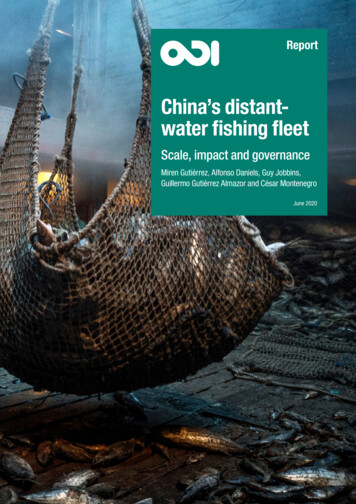
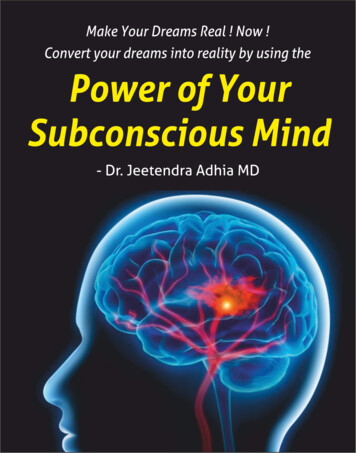
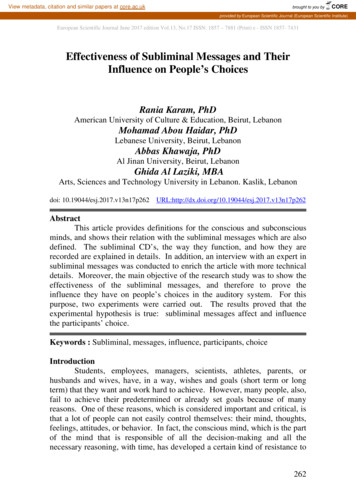

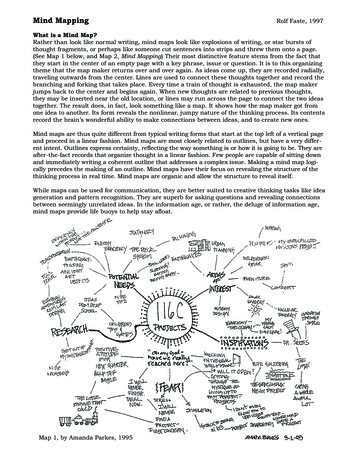
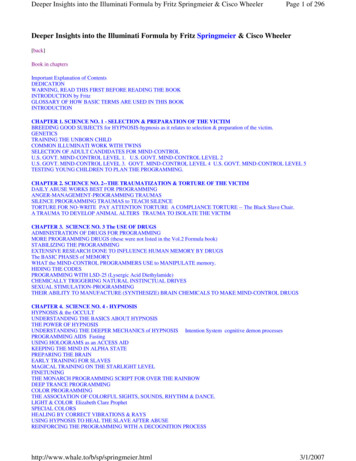
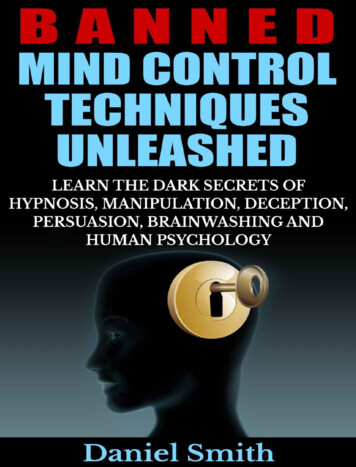
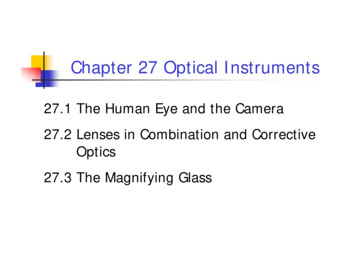

![The Art of Perspective Phil Metzger [Digital] - Internet Archive](/img/30/the-art-of-perspective-phil-metzger-digital.jpg)
